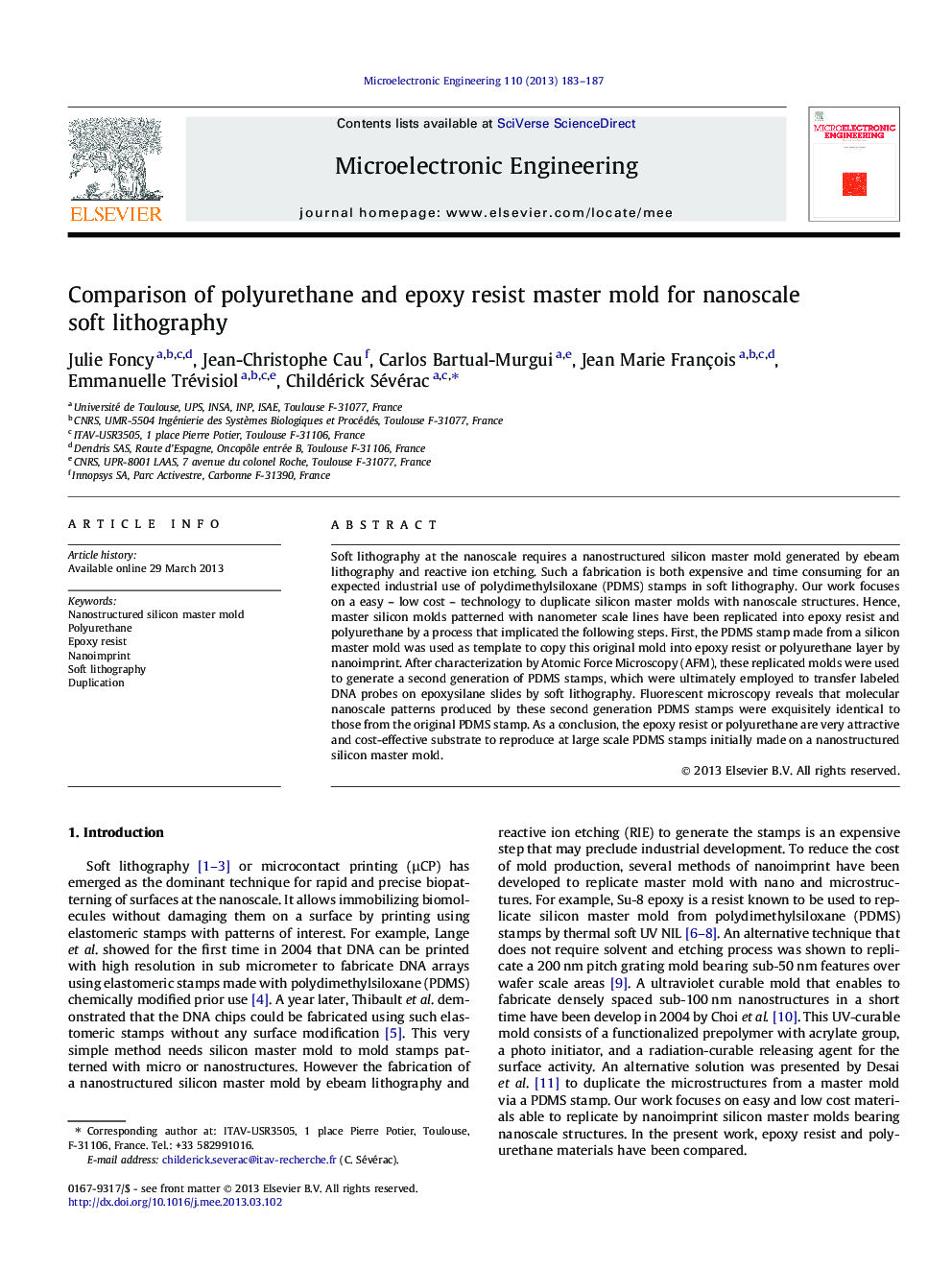| کد مقاله | کد نشریه | سال انتشار | مقاله انگلیسی | نسخه تمام متن |
|---|---|---|---|---|
| 544257 | 1450371 | 2013 | 5 صفحه PDF | دانلود رایگان |

• Epoxy resist & polyurethane can be used to replicate nanostructured silicon masters.
• Replicated line gratings (500 nm width /1 μm pitch) were obtained by nanoimprint.
• These materials do not require an anti-adhesive treatment for PDMS stamp unmolding.
• Low cost polyurethane is a good candidate for soft lithography industrial processes.
Soft lithography at the nanoscale requires a nanostructured silicon master mold generated by ebeam lithography and reactive ion etching. Such a fabrication is both expensive and time consuming for an expected industrial use of polydimethylsiloxane (PDMS) stamps in soft lithography. Our work focuses on a easy – low cost – technology to duplicate silicon master molds with nanoscale structures. Hence, master silicon molds patterned with nanometer scale lines have been replicated into epoxy resist and polyurethane by a process that implicated the following steps. First, the PDMS stamp made from a silicon master mold was used as template to copy this original mold into epoxy resist or polyurethane layer by nanoimprint. After characterization by Atomic Force Microscopy (AFM), these replicated molds were used to generate a second generation of PDMS stamps, which were ultimately employed to transfer labeled DNA probes on epoxysilane slides by soft lithography. Fluorescent microscopy reveals that molecular nanoscale patterns produced by these second generation PDMS stamps were exquisitely identical to those from the original PDMS stamp. As a conclusion, the epoxy resist or polyurethane are very attractive and cost-effective substrate to reproduce at large scale PDMS stamps initially made on a nanostructured silicon master mold.
Figure optionsDownload as PowerPoint slide
Journal: Microelectronic Engineering - Volume 110, October 2013, Pages 183–187